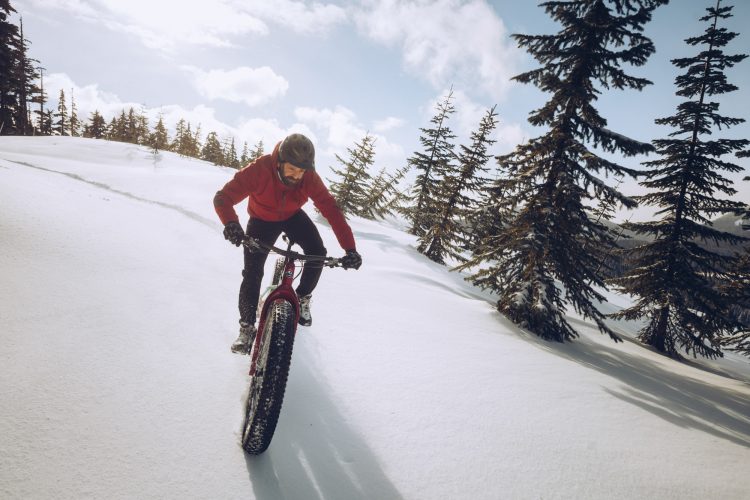
Rocky Mountain has revised their Powerplay and Dyname drive systems and rebuilt both of their e-bike options, the Altitude and Instinct Powerplays. Both of the new bikes will use the updated Dyname 4.0 drive system, which is now lighter and quieter.
The Dyname 4.0 motor is over 18% lighter than the previous version, and Rocky Mountain says that the motor has larger bearings for improved durability. The Dyname 4.0 also now has “a lower motor rpm that reduces the amount of the electrical whine compared to other systems” and the upper chain slider from the 3.0 system was removed to reduce drag and noise. The motor has the same amount of torque, at 108Nm, and the same power at 700W of peak output.
Rocky Mountain says that the torque curve has been redesigned to gradually apply power to achieve a max power of 700W at the maximum 700W output, giving it a variable power curve. “By having a variable power curve, you’ll have more control of your bike on the trail including scenarios like steep, technical hill starts,” says the brand in a press release.

Rocky has increased the Powerplay battery capacity from 672Wh to 720Wh for a bigger charge, and the batteries are more easily removable. The bike is also compatible with an extra, packable 314Wh battery, for a total of 1,034Wh.
There is a 4-amp and a 2-amp charger for the new models. The 2-amp charger will juice up a battery to 100% in just over seven and a half hours, while the 4-amp will cut the time by almost half. The new e-bikes also come with a larger screen dubbed the Jumbotron, showing info like cadence, average speed, and distance.
The Altitude Powerplay and Instinct Powerplay are similar, but the travel matches their non-motorized models, with the Altitude getting 160mm of rear travel with a 170mm fork, and the Instinct with 140mm of rear travel and a 150mm fork. Thus, they are intended either for enduro, all-mountain riding, or trail riding. Both bikes come in sizes S-XL.

The bikes both feature a 10mm chainstay adjustment, the Ride-4 geometry adjustment flip-chip, internal cable routing, and there’s a modular shock mount, available only on carbon models,that enables future kinematics updates. The frame aesthetics have also been updated for a sleeker look.
The Altitude’s geometry on a medium bike in the neutral setting has a 64° HTA, a 76° STA, a 420mm seat tube length, 437mm chainstays, and a 455mm reach.
The Instinct in the same size and setting has a 64.7° HTA, a 76.7° STA, a 420mm seat tube length, 437mm chainstays, 463mm of reach, and a 1,225mm wheelbase.
Rocky Mountain is making the Powerplays in two frame materials, as they do their non-motorized bikes, and a base model Instinct alloy bike will start at $5,600 while a Carbon 90 version will top out at $12,039.

The Altitude A30 comes with a coil shock and starts at $5,749 while the Altitude C90 stops out at $10,649. For more information, see the Rocky Mountain website.
First impressions: Altitude Powerplay C70
I’ve only managed to squeeze in one ride on the new Altitude Powerplay, so I’ll keep this brief and save the full opinions for the coming review. Thus far, I’m pleasantly surprised and satisfied with the new bike. I haven’t ridden the previous Powerplay models, but the motor on this version feels sophisticated.
Rather than any sort of high-geared whine, the motor has a more muted whirrrr to it, that’s hardly noticeable, although the sound does grow more apparent after flicking the power mode up. Power delivery feels good and seems to match the rider’s input. Want more motor? Pedal harder. Less motor? Lay off a bit.
I didn’t get a full charge on this bike before my ride, so I’ll save the details on charging and range for the full review as well.
The Altitude Powerplay follows the steps of Rocky’s non-motorized Altitude and grows into 29-inch wheels. The geometry on the Powerplay was due for an update, and in that regard, it feels fairly similar to the Altitude I rode last year. Climbing feels upright and supported, and the bike feels planted and eager to descend. Leave any questions in the comments, and I’ll do my best to reply as I’ll be riding this bike more. We will have a full review in the coming months.





















